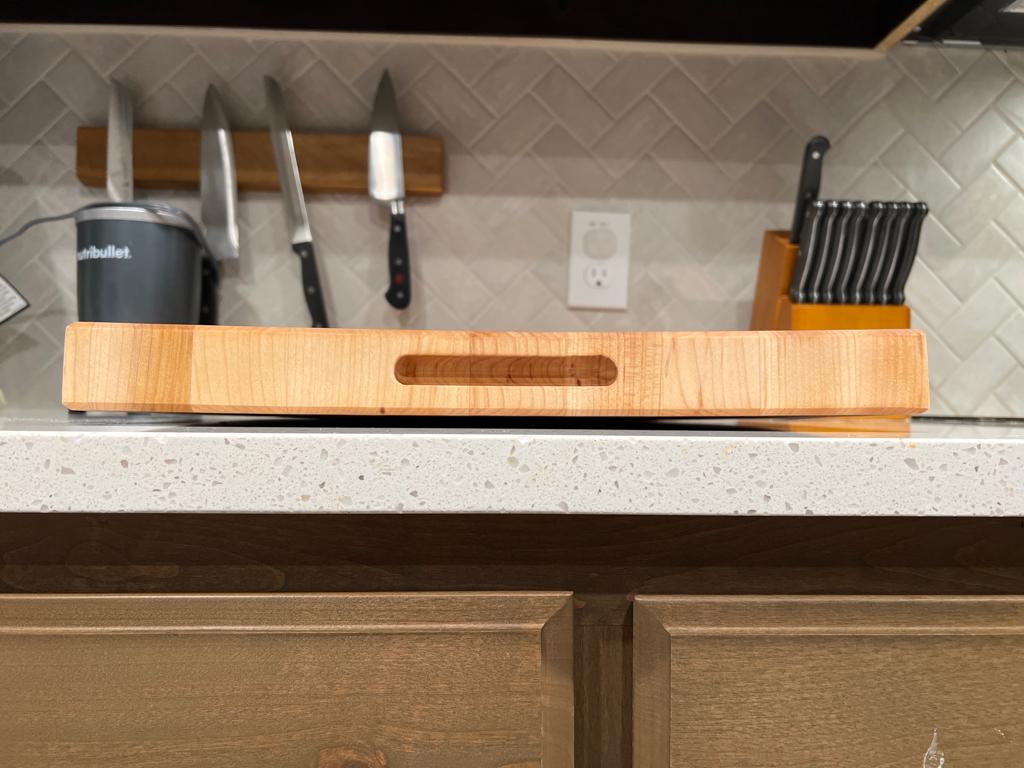
Why Cutting Boards Warp and How to Prevent It
Cutting boards are an essential tool in any kitchen, whether you're a professional chef or a home cook. However, one of the most common issues with cutting boards, especially wooden ones, is warping. A warped cutting board can make food preparation frustrating, causing instability that leads to safety concerns. Understanding why cutting boards warp and taking steps to prevent it can help you preserve their longevity and functionality.
Why Is My Cutting Board Warping?
Warping occurs when different parts of a cutting board expand or contract at different rates. This uneven movement causes the board to bend or twist. Several factors contribute to cutting board warping, including material choice, moisture exposure, and storage practices.
1. Uneven Moisture Absorption
Wood is a hygroscopic material, meaning it absorbs and releases moisture depending on its environment. When one side of the cutting board absorbs more moisture than the other, it expands unevenly, leading to warping. This is common when a cutting board is left sitting on a damp countertop or submerged in water for too long.
2. Temperature Fluctuations
Extreme temperature changes can also cause warping. For instance, exposing a wooden cutting board to direct sunlight or placing it near a heat source like a stove can cause the wood to dry out unevenly. On the other hand, sudden exposure to cold temperatures, such as being placed in a refrigerator, can also contribute to warping by causing rapid contraction of the wood fibers.
3. Incorrect Cleaning Practices
Many people make the mistake of cleaning their cutting boards in a dishwasher. The combination of hot water, steam, and detergent can cause severe warping, especially for wooden cutting boards. Soaking the board in water for prolonged periods can also lead to swelling and eventual warping. It's best not to submerge your cutting board in water.
4. Improper Storage
How you store your cutting board affects its structural integrity. Leaning a wet board against a wall or storing it in a humid environment can create uneven drying, which leads to warping over time. Stacking heavy objects on top of a damp board can also cause bending. If possible, lay your cutting board on its side after washing. Be careful it doesn't tip over.
What Can I Do to Prevent My Cutting Board from Warping?
Now that we understand why cutting boards warp, let's explore the best ways to prevent this problem.
1. Oil and Condition Regularly
One of the best ways to prevent warping is to keep your cutting board well-conditioned with food-safe mineral oil or beeswax-based board creams. Applying oil regularly helps seal the wood, preventing it from absorbing too much moisture or drying out unevenly. Ideally, you should oil your cutting board at least once a month or more frequently if used often.
2. Avoid Water Exposure
To protect your cutting board from warping, never soak it in water or leave it sitting in a wet sink. Instead, wash it by hand using mild soap and warm water, then immediately dry it with a towel. Letting it air dry while standing upright ensures even drying on both sides.
3. Store Your Board Properly
Proper storage helps prevent warping. Keep your cutting board in a dry, cool place away from direct sunlight and heat sources. Store it flat or on its side to promote even air circulation and drying.
4. Use Both Sides Equally
Warping often occurs when one side of the board is exposed to moisture and heat while the other remains dry. To combat this, use both sides of your cutting board regularly. This ensures even wear and prevents one side from becoming more swollen than the other.
5. Never Put a Cutting Board in the Dishwasher
The high heat and prolonged moisture exposure in a dishwasher are too harsh for wooden cutting boards. Even plastic boards can warp in a dishwasher if exposed to excessive heat. Always hand-wash your board to maintain its shape and durability.
Conclusion
Warping is a common issue for cutting boards, but with the right care and maintenance, it can be prevented. By understanding the causes of warping and following proper cleaning, storage, and conditioning techniques, you can extend the life of your cutting board and keep it in top shape for years to come. Whether you're using a wooden, plastic, or composite cutting board, treating it with care ensures a stable and safe surface for all your culinary needs.

